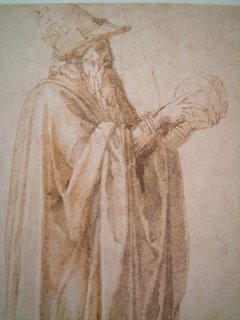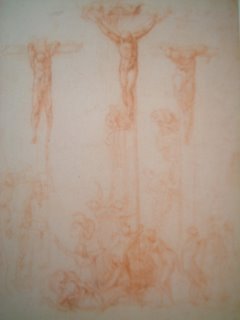The long-awaited Michelangelo's sketches
 Finally, I've got some photos (taken from the book that I bought from the British Museum) of the sketches that Michelangelo studied through out his life... (and what a life, he died aged 89!!!)
Finally, I've got some photos (taken from the book that I bought from the British Museum) of the sketches that Michelangelo studied through out his life... (and what a life, he died aged 89!!!)Portait of Michelangelo (1546), engraving by Giulio Bonasone

An old man wearing a hat (Philosopher) 1495-1500
 The three crosses (1523)
The three crosses (1523)  Study for Adam (1511)
Study for Adam (1511) this is a study for a part of the famous Sistine Chapel ceiling (I am missing the hand of God though...)


4 Comments:
Ευτυχώς δεν σε ζηλεύω!!!:)
Από της φώτο μοιάζει να είναι η ίδια έκθεση που είχα δει στη Μαδρίτη το Φεβρουάριο του 2005...οπότε όλα καλά!:)
φιλιά και να περνάς καλά!
thank you gira...
So, what are your comments on that collection of sketches?
I learnt a few things like, Michelangelo was studying each painting/sculpture or tapestry by drawing sketches of several parts of the actual work, and then scaling them up to fit the walls, at least this is what he did on the Sistine chapel. Since, I mentioned the chapel, he finished the tapestry of the ceiling all by himself, mostly because he was a perfectionist...
I'll look for more clues in the book...
Was very interesting…especially the details…the human bodies…studied in a way that I have never seen before. And his obsession with every little muscle and nerve!
bacio
apparently, he studied anatomy , and even human corpses to make sure that he captured the essence of the naked human body...
One of the most stricking sketches is Lazarous 1516, where he is trying to make sure that he is capturing the fact Lazarous was a dead man before his ressurection, thus Michelangelo is showing him with a rather rigid posture while the men in the background are shown alive and more active...
Post a Comment
<< Home